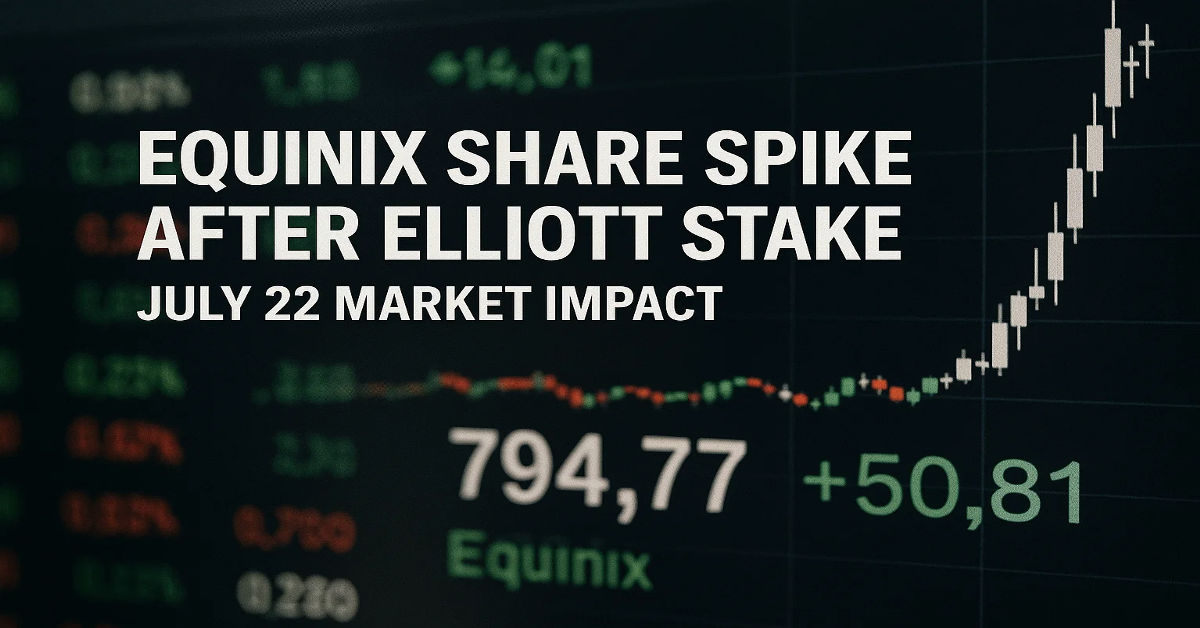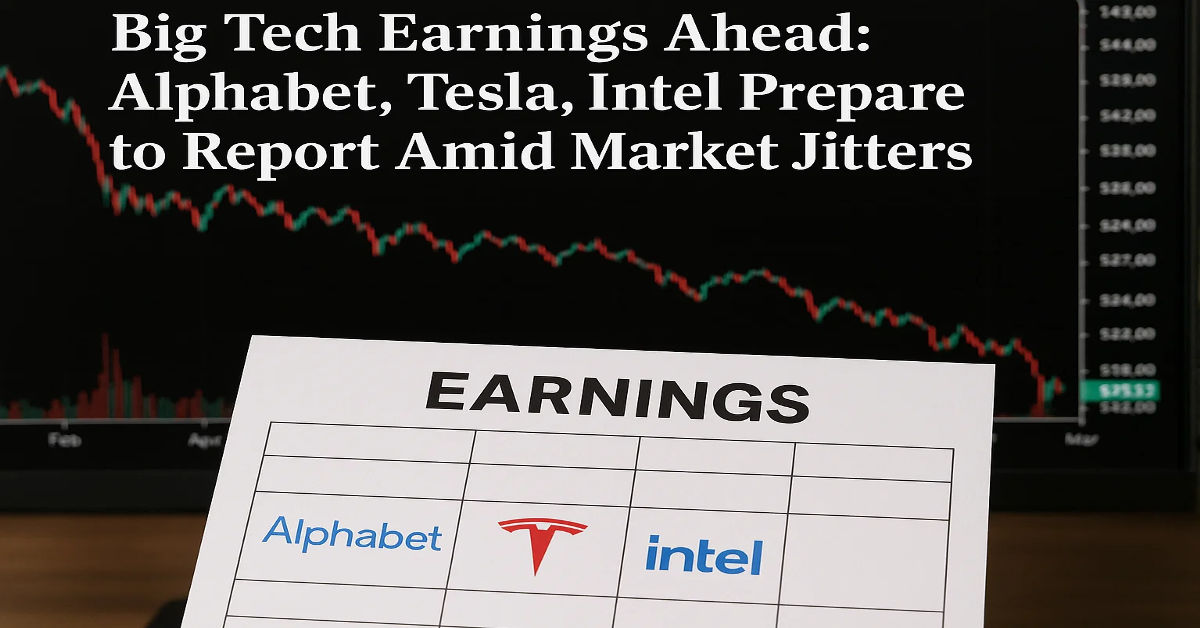
The financial markets are in rally mode as of July 21, with S&P 500 and Nasdaq 100 jump to record highs as bond yields fall, signaling renewed investor confidence. Futures for both major U.S. indexes surged in pre-market trading Monday, continuing a strong trend that began earlier this quarter.
This momentum highlights an evolving landscape where investors are increasingly optimistic about the economic outlook, Federal Reserve policy, and corporate earnings. In this detailed report, we break down what’s driving the trend, the technical setup, and what to watch as the markets forge ahead.
What’s Fueling the Surge in S&P 500 and Nasdaq Futures?
July 21 futures data showed:
- S&P 500 futures up by 0.6% in pre-market hours
- Nasdaq 100 futures rising by 0.8%, poised for yet another record open
This marks the fourth consecutive session of gains and follows Friday’s record close for both indices.
Key Drivers Behind the Rally:
- Falling Bond Yields:
The 10-year U.S. Treasury yield fell below 3.95%—a psychologically and technically important level. Lower yields make equities, especially growth and tech stocks, more attractive. - Inflation Easing:
The latest Consumer Price Index (CPI) and Producer Price Index (PPI) readings confirmed a downward trend in inflation. Core CPI rose just 0.1% month-over-month, fueling hopes that the Federal Reserve may pause or even cut interest rates sooner than expected. - Strong Q2 Earnings Reports:
Corporate results have been surprisingly resilient. Tech heavyweights like Microsoft, NVIDIA, and Alphabet have reported strong earnings, reaffirming investor confidence in the sector. - Market Sentiment Shift:
As recession fears subside, money managers are rotating back into equities, particularly the tech sector. Investor sentiment indexes are flashing “greed” for the first time since early 2024.
Technical Analysis: Futures and Index Levels to Watch
The technical charts support the bullish trend. Here’s a breakdown:
S&P 500 Futures Outlook:
- Current Level: 5,510
- Support Zone: 5,470 – 5,480
- Resistance: 5,550 and psychological barrier at 5,600
The S&P is showing a strong ascending channel formation, indicating trend continuation unless macro news disrupts momentum.
Nasdaq 100 Futures Outlook:
- Current Level: 20,130
- Support Zone: 19,920 – 20,000
- Resistance: 20,200 and 20,500
The Nasdaq 100, boosted by semiconductor and AI-related stocks, is in uncharted territory after breaking out from a consolidation zone last week.
Expert Opinions on the Trend
“With yields falling and inflation cooling, we are entering a ‘goldilocks’ period for growth stocks,” said Lisa Grant, Chief Market Analyst at Sterling Capital. “As long as the Fed doesn’t surprise the market, the rally has legs.”
Economists echo the sentiment that the Fed is likely to stay on hold through Q3, with a possibility of easing later this year if economic data continues to stabilize.
Broader Market Context and the Innovation Economy
The tech sector remains at the forefront of this rally. Investors are not only eyeing current earnings but also future innovation, particularly in AI, cloud infrastructure, and quantum computing. Companies like Revo Technologies in Murray, Utah, are setting the stage for a disruptive decade ahead.
For an in-depth look at innovation shaping investor behavior, read our feature on
👉 Revo Technologies – The Future of Innovation
Tech trends are also influencing broader cultural and social narratives. Explore more in our
👉 Technology category here
Potential Risks to Monitor
Despite the optimism, several risks could alter the market’s course:
1. Geopolitical Instability
Tensions in the South China Sea and rising friction between NATO and Russia continue to simmer in the background. Any escalation could spook investors and trigger a flight to safety.
2. Fed Policy Shifts
Although sentiment has shifted, a strong labor market or unexpected inflation spike could push the Fed to hike rates again. Jerome Powell is scheduled to speak at the Jackson Hole Symposium next month—an event likely to set the short-term tone.
3. Earnings Disappointments
Big Tech has led the charge, but weaker-than-expected results from Amazon, Meta, or banks could trigger short-term corrections.
4. Economic Data Surprises
Key indicators such as GDP, PMI, and consumer confidence reports due later this week may either validate or challenge the bullish trend.
Conclusion
The surge in the S&P 500 and Nasdaq 100 on July 21 reflects a powerful intersection of falling bond yields, improved investor sentiment, and strong corporate earnings. Markets are responding positively to signs of disinflation and a potential shift in Federal Reserve policy, creating a favorable backdrop for growth stocks, especially in the technology sector.
This bullish momentum suggests a period of renewed optimism, though it is not without its risks. Geopolitical tensions, surprise economic data, or hawkish Fed commentary could quickly change the market’s tone. Still, the current technical and fundamental landscape supports continued upside in the near term.
The trend highlights how sensitive financial markets remain to macroeconomic signals and how quickly narratives can shift. Investors should remain agile and diversify their holdings to mitigate volatility. While the record highs are impressive, sustainable growth will depend on a continued balance of innovation, policy stability, and global economic health. For now, the bulls are clearly in control, but the road ahead will require focus, strategy, and discipline.
FAQs
1. What caused the S&P 500 and Nasdaq 100 to jump to record highs on July 21?
The surge in both indexes was primarily driven by a drop in U.S. Treasury bond yields, which made equities more attractive—especially growth stocks like tech. Additionally, investor sentiment turned bullish due to easing inflation data and better-than-expected corporate earnings. These factors combined to push the market to new highs. Lower bond yields reduce borrowing costs and boost investor risk appetite, further supporting the rally.
2. How do bond yields affect the stock market?
Bond yields are closely tied to interest rate expectations. When yields fall, borrowing becomes cheaper, which can stimulate corporate investment and consumer spending—both of which support higher stock valuations. Lower yields also make fixed-income investments less attractive, prompting investors to shift toward equities, especially in sectors like technology and consumer discretionary. This flow of capital can push markets higher.
3. What are Nasdaq 100 futures, and why are they important?
Nasdaq 100 futures are financial contracts that allow traders to speculate on or hedge against future movements in the Nasdaq 100 index. They provide insight into how the market might open and trade in the short term. Futures trading occurs before regular market hours, so sharp movements in these instruments often signal the market’s direction. Institutions and retail traders both watch futures closely for early signals of market momentum.
4. Will the Fed’s monetary policy influence future market trends?
Yes, the Federal Reserve’s decisions on interest rates and balance sheet policy significantly influence equity markets. A dovish stance—meaning no further rate hikes or potential cuts—typically supports stock prices, particularly in high-growth sectors. Conversely, hawkish signals from the Fed can spook investors and trigger selloffs. As of July 21, the market is pricing in a pause in rate hikes, which has supported bullish sentiment.
5. Are current record highs sustainable in the long term?
While the rally is supported by solid fundamentals like strong earnings and falling inflation, sustainability depends on several factors. Continued economic stability, geopolitical calm, and consistent Fed messaging are crucial. Markets may also experience healthy pullbacks or consolidations even within a bullish trend. Long-term sustainability hinges on maintaining investor confidence and ongoing macroeconomic improvement.
6. How should individual investors respond to this market trend?
Individual investors should avoid chasing short-term highs and instead focus on a long-term strategy. Diversifying across sectors, maintaining a balance between growth and value stocks, and staying updated on macroeconomic signals are key. Consulting with a financial advisor is recommended for aligning investments with risk tolerance. Monitoring future earnings reports and Fed communications can also help inform timing and positioning.
7. What sectors are leading the current rally in the S&P 500 and Nasdaq 100?
Technology remains the primary driver of gains, with strong performance from AI-related firms, semiconductor companies, and cloud service providers. Consumer discretionary and communication services are also showing strength. The rally is mostly growth-led, reflecting investor preference for sectors that benefit from lower interest rates and long-term innovation themes. Defensive sectors like utilities have lagged.
8. Could geopolitical tensions reverse the bullish trend?
Yes, geopolitical shocks—such as military conflict, trade wars, or diplomatic breakdowns—can quickly change investor sentiment. These events often lead to a “risk-off” environment, where capital flows out of equities and into safe havens like gold or U.S. Treasuries. While current geopolitical risks are being monitored, they haven’t significantly impacted markets yet. That could change quickly if tensions escalate.
9. What technical levels should traders watch in the coming days?
For the S&P 500, key resistance is around 5,550, with support near 5,470. For the Nasdaq 100, resistance is at 20,200, with technical support at 20,000. If these indexes break above their resistance levels with volume confirmation, further upside is possible. However, if they fail to hold support during pullbacks, short-term corrections could follow. Traders often use moving averages and RSI to gauge momentum.
10. Why is investor sentiment important for market trends?
Investor sentiment reflects how optimistic or pessimistic the market feels about future conditions. It can influence buying and selling behavior, sometimes even more than hard data. High sentiment can fuel rallies, but it can also lead to overbought conditions. Conversely, extremely bearish sentiment often marks a market bottom. Monitoring sentiment indicators helps investors avoid emotional decisions and align with market psychology.


























































































































































































































































































































